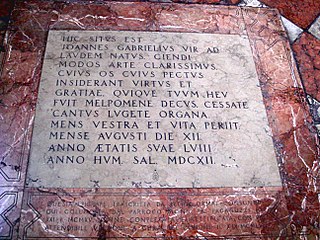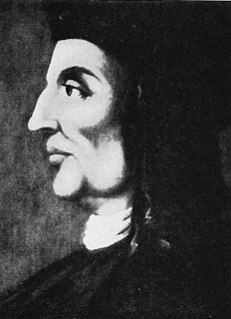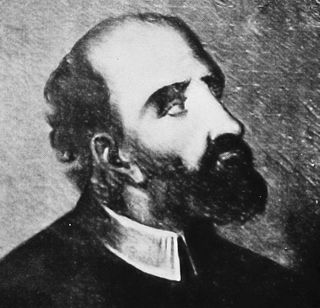Notes
This article includes a list of references, related reading or external links, but its sources remain unclear because it lacks inline citations .(January 2016) |
Paolo Animuccia (died 20 October 1569) was a Renaissance Italian composer. He was the brother of Giovanni Animuccia.
It is uncertain whether he was older or younger than his brother Giovanni. Giuseppe Ottavio Pitoni, with inaccuracy, takes upon himself to doubt the relationship altogether; but their contemporary Poccianti distinctly affirms it, speaking of Paolo as, "Animuccia, laudatissimi Joannis frater."
Paolo was made maestro at the Lateran on the removal of Rubino to the Vatican in 1550, and held the post until 1552 when he was succeeded by Lupacchini. Pitoni insists that he remained at the Lateran from 1550 to 1555; but the Libri Censuali are against him. Giuseppe Baini, however, hints that it is possible that he may have occupied the post a second time temporarily in 1555, just before the election of Palestrina, and that this may have misled Pitoni. He died, according to Poccianti, at Borne in 1563.
He has left but little printed music behind him. Two madrigals of his appear in two separate volumes, one in a book of pieces by Orlando Lasso, and the other in a miscellaneous collection of various authors, and both published by Antonio Gardano of Venice in 1559. There is a motet of his in a collection of motets published at Venice in 1568; and Barrè of Milan published some of his motets in a miscellaneous volume in 1588. According to François-Joseph Fétis, the Library of John IV of Portugal contained a collection of Paolo Animuccia's Madrigals in two books entitled Il Desiderio, Madrigali a cinque, Lib. 2.
This article includes a list of references, related reading or external links, but its sources remain unclear because it lacks inline citations .(January 2016) |

Giovanni Gabrieli was an Italian composer and organist. He was one of the most influential musicians of his time, and represents the culmination of the style of the Venetian School, at the time of the shift from Renaissance to Baroque idioms.

Orlande de Lassus was a composer of the late Renaissance, chief representative of the mature polyphonic style of the Franco-Flemish school, and considered to be one of the three most famous and influential musicians in Europe at the end of the 16th century.

Giuseppe Ottavio Pitoni was an Italian organist and composer. He became one of the leading musicians in Rome during the late Baroque era, the first half of the 18th century.
Andrea Gabrieli was an Italian composer and organist of the late Renaissance. The uncle of the somewhat more famous Giovanni Gabrieli, he was the first internationally renowned member of the Venetian School of composers, and was extremely influential in spreading the Venetian style in Italy as well as in Germany.

Cipriano de Rore was a Franco-Flemish composer of the Renaissance, active in Italy. Not only was he a central representative of the generation of Franco-Flemish composers after Josquin des Prez who went to live and work in Italy, but he was one of the most prominent composers of madrigals in the middle of the 16th century. His experimental, chromatic, and highly expressive style had a decisive influence on the subsequent development of that secular music form.

Orazio Vecchi was an Italian composer of the late Renaissance. He is most famous for his madrigal comedies, particularly L'Amfiparnaso.

Gioseffo Zarlino was an Italian music theorist and composer of the Renaissance. He made a large contribution to the theory of counterpoint as well as to musical tuning.

Felice Anerio was an Italian composer of the late Renaissance and early Baroque eras, and a member of the Roman School of composers. He was the older brother of another important, and somewhat more progressive composer of the same period, Giovanni Francesco Anerio.

Giovanni Maria Nanino was an Italian composer and teacher of the late Renaissance. He was a member of the Roman School of composers, and was the most influential music teacher in Rome in the late 16th century. He was the older brother of composer Giovanni Bernardino Nanino.
Giovanni Francesco Anerio was an Italian composer of the Roman School, of the very late Renaissance and early Baroque eras. He was the younger brother of Felice Anerio. Giovanni's principal importance in music history was his contribution to the early development of the oratorio; he represented the progressive trend within the otherwise conservative Roman School, though he also shared some of the stylistic tendencies of his brother, who was much indebted to Palestrina.

Giovanni Animuccia was an Italian composer of the Renaissance who was involved in the heart of Rome's liturgical musical life. He was one of Giovanni Pierluigi da Palestrina's most important predecessors and possibly his mentor. As maestro di capella of St Philip Neri's Oratory and the Capella Giulia at St Peter's, he was composing music at the very center of the Roman Catholic Church, during the turbulent reforms of the Counter-Reformation and as part of the new movements that began to flourish around the middle of the century. His music reflects these changes.
Giovanni Croce was an Italian composer of the late Renaissance, of the Venetian School. He was particularly prominent as a madrigalist, one of the few among the Venetians other than Monteverdi and Andrea Gabrieli.
Giovanni de Macque was a Netherlandish composer of the late Renaissance and early Baroque, who spent almost his entire life in Italy. He was one of the most famous Neapolitan composers of the late 16th century; some of his experimentation with chromaticism was likely influenced by Carlo Gesualdo, who was an associate of his.
Annibale Stabile was an Italian composer of the Renaissance. He was a member of the Roman School of composition, and probably was a pupil of Palestrina. He was active mainly at Rome but moved briefly to Kraków, Poland at the end of his life.
This is a list of notable events in music that took place in 1555.
Jacquet de Berchem was a Franco-Flemish composer of the Renaissance, active in Italy. He was famous in mid-16th-century Italy for his madrigals, approximately 200 of which were printed in Venice, some in multiple printings due to their considerable popularity. As evidence of his widespread fame, he is listed by Rabelais in Gargantua and Pantagruel as one of the most famous musicians of the time, and the printed music for one of his madrigals appears in a painting by Caravaggio.
Simone Molinaro was a composer of the late Renaissance in Italy. He was especially renowned for his lute music.
Giovanni Rovetta was an Italian Baroque composer and maestro di capella of the Capella Marciana at St Mark's Basilica, Venice between Monteverdi and Cavalli.

Giovanni Giorgi was a priest and an Italian composer. His style of polychoral church compositions are influenced by earlier Roman School composers such as Orazio Benevoli, but also incorporate later Roman Baroque features and some elements of early Classical style.
Aurelio Bonelli was an Italian composer, organist and painter. Born in Bologna, practically nothing is known about him save that he was student of the painter Agostino Carracci. After Adriano Banchieri moved to Imola in 1601 Bonelli took his job as organist at San Michele in Bosco.